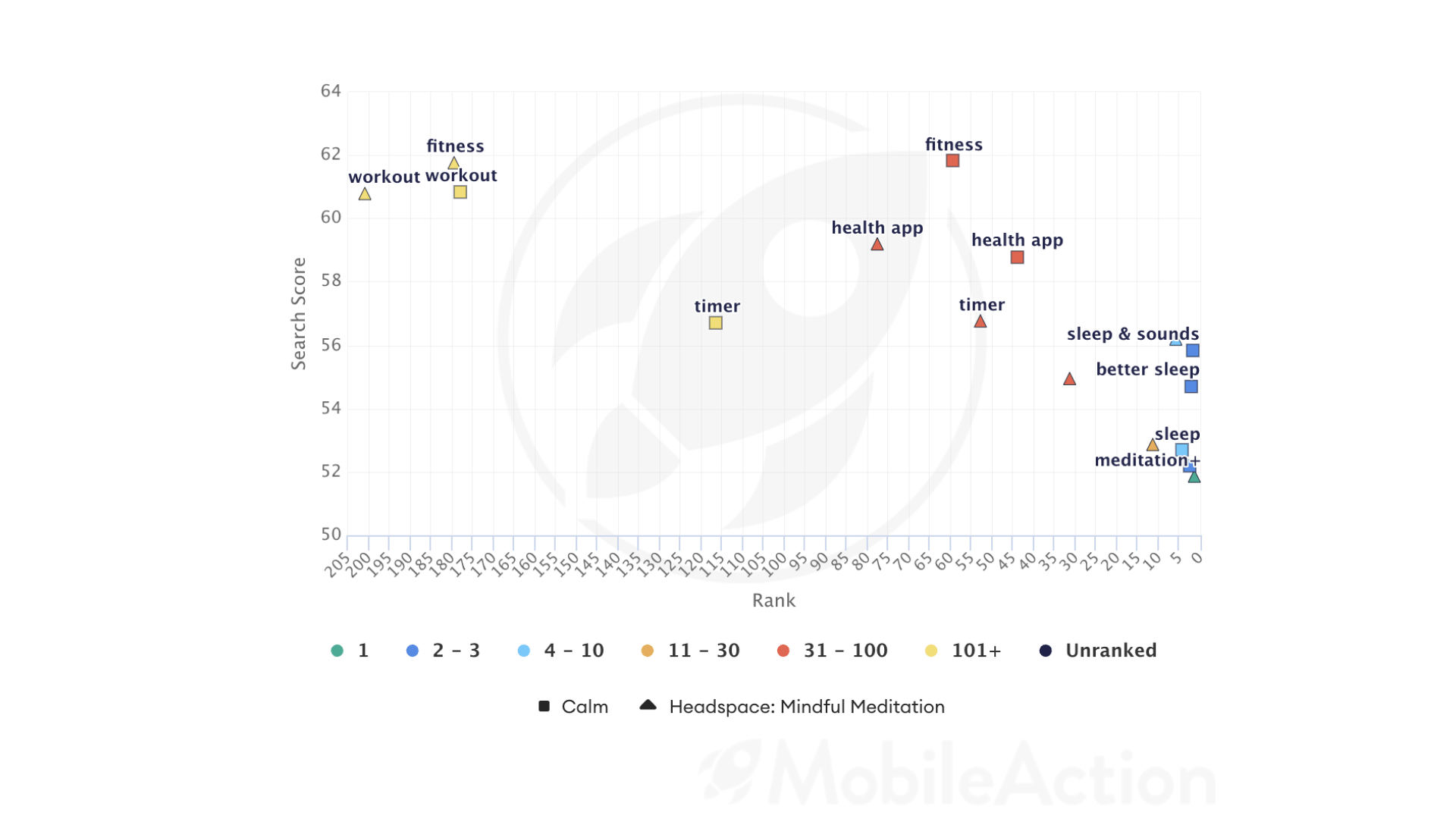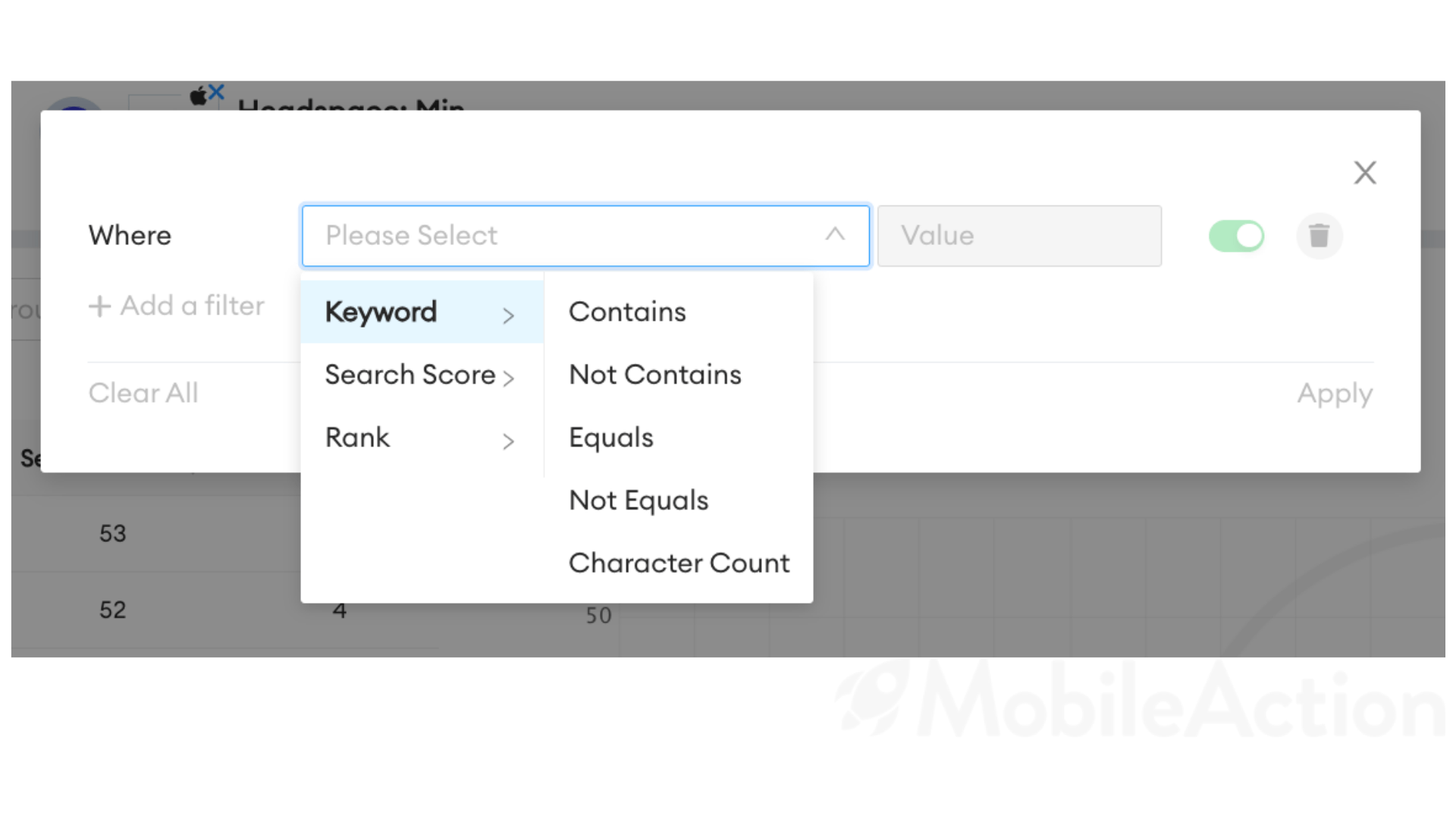We all know that in the competitive world of Apple Search Ads, staying ahead of the game requires a good grasp of how your app stacks up against the competition. And when it comes to this, keyword research is absolutely crucial.
But let’s be real, it can be a time-consuming process. You have to dig into your competitors’ keywords, analyze them, check their rankings, and compare them to your own. It’s a never-ending list of tasks!
Well, guess what? Our latest product, the “Keyword Positioning Map,” makes all of that a breeze. With just one click, you get a visual display of all your competitors’ data, well organized and easy to understand. If you are one of those who say that time is money, let’s take a closer look at this new product that will boost your apps performance.
Exploring Competitor Rankings: Unleashing Insights for Success
Introducing the Keyword Positioning Map, an invaluable tool for app developers and marketers seeking to unlock meaningful insights into their app’s keyword rankings. With a simple selection and analysis of targeted keywords, you can now visualize how your app stents in the competiton in various storefronts, all within a single, comprehensive chart.

This feature also empowers you to identify both the strengths and weaknesses of your app’s positioning, enabling you to unweil your strategies accordingly. By leveraging competitor rankings, you gain a deep understanding of your keyword performance and market positioning across different storefronts. With this analysis, you can refine your targeting, optimize your keyword selection, and tailor your marketing strategies to secure a distinct competitive edge.
Uncover Hidden Gems: Harnessing New Keyword Opportunities
One of the most valuable use cases of the Keyword Positioning Map is uncovering new keyword opportunities. Through a thorough analysis of the map, you can pinpoint areas where your app is thriving while your competitors are either absent or struggling. By strategically targeting these regions and specific keywords, you can significantly enhance your visibility, attract a larger user base, and fuel your app’s growth.
In the latest update, we’ve enhanced the visibility of this feature, making it even simpler for you to identify keywords that are not currently ranked on the chart. We’ve streamlined the process of selecting and tracking keywords of interest, ensuring a seamless experience.
Furthermore, we’ve introduced search score and rank filters, allowing you to narrow down your focus and concentrate on specific keyword performance ranges. This makes it easier than ever to compare and evaluate your app’s rankings across different keywords, providing you with valuable insights for optimization and strategic decision-making.

Key Takeaways
- You can easily upgrade your keyword research with Keyword Positioning Map since it makes the process much easier and much faster. Hence will boost your ASO strategies.
- It also presents you a wide competitor analysis. You can now see where do your rankings stand compared to your competitors. Do you have better rankings, or do your competitors are faster than you? You can find out in seconds.
- Lastly, it will now be much easier to grow your keyword list because you can see which keywords you are missing and which ones would be more beneficial to add from your competitors’ strategies.
Interested in witnessing the transformative capabilities of our leading mobile UA optimization platform to enhance your business? Book a demo session with us today and experience firsthand the impact it can have on your success!




